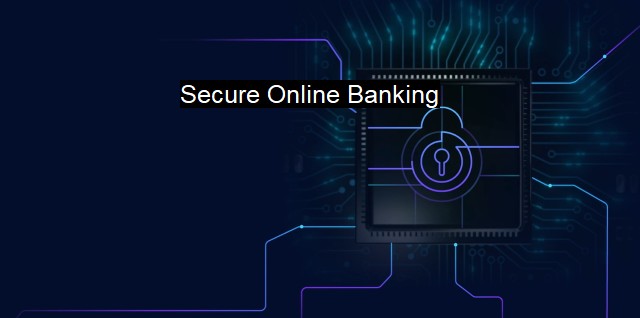What is Secure Online Banking?
The importance of safe online banking: best practices and security measures to protect against cyber threats
Secure online banking refers to safeguarding your bank account information on the internet from unauthorized access and misuse through digital means. In an age where information technology is essential to almost every aspect of our lives, adversaries attempt to gain access to electronic systems and interrupt or misuse bank transactions causing a significant threat to personal and financial information. This is where cybersecurity measures come into play in secure online banking.Cybersecurity, in simple terms, can be defined as protecting internet-connected systems such as software, hardware, and data from cyber attacks. In the banking scenario, it aims to shield customers’ personal and confidential information from miscreants prowling the World Wide Web. Cybersecurity is essential as most banking transactions occur online, making users vulnerable to unauthorized and criminal activities if adequate safeguards are not in place.
Secure online banking comprises extensive authentication sequences, such as two-factor identification, safety codes, verification dialed down to hardware information of the device, etc. It offers layered protection ensuring that even if one mechanism is compromised, the attacker still has multiple layers to decipher before gaining access to a user's account.
One strategy to secure online banking services include end-to-end encryption which makes sure all the data transmitted between customers and banks are encoded. As a result, even if the attackers seize the data, they would not be able to read or make meaning out of it without the unique decryption code. Another strategy is the Banks' use of intrusion detection systems. They monitor all traffic inbound and recognize patterns similar to previous cyber-attacks which immediately sends a risk signal.
Banks around the world have been employing cybersecurity measures to provide a safe online banking experience for their customers. They encourage customers to install effective and updated antivirus software on personal devices used for online banking. Antivirus software is an excellent asset in providing secure online banking because it can detect and remove malicious software and various threats including phishing, viral attacks, and hacking efforts.
Besides, banks also possess their in-house security measures for digital banking platforms that scan for malware, detect intrusions, and encrypt all data. the mix of artificial intelligence (AI) and machine learning allows banks to identify patterns in an attacker's approach, making alerts better, faster, and more effective.
Secure online banking also encapsulates measures to make customers aware of the potential risks involved and educate them about the importance of safeguards such as setting a strong password, avoiding suspicious emails, regularly updating banking software, etc. A responsible customer up-to-date with security practices adds another level of protection to their own and the bank's data wealth.
Secure online banking involves a combination of high-level encryption techniques, effective antivirus software, intrusion detection methods, stringent user authentication protocols, educated and alert customers, all put together to ensure that sensitive data is safe every time a customer logs into his or her online banking account. The advance of technology has intensified the war between banks and cyber attackers; with continuous upgrades and betterment in cybersecurity practices, Banks are leaving no stone unturned in providing the safest online banking experience to their customers. Besides, by educating their customers to be hands-on, alert, and involved in the secure banking process, a better shielded online environment is made possible. Going into the future, with the prognosis of virtually everything being interlinked and managed through the internet, secure online banking will not just remain a convenient aspect, but become a necessary one.

Secure Online Banking FAQs
What is secure online banking?
Secure online banking refers to the use of measures to protect online banking transactions from potential cyber threats such as hacking or identity theft. This may include using antivirus software, creating strong and unique passwords, and being cautious when entering personal information online.What types of cybersecurity measures can I use to ensure secure online banking?
Some effective cybersecurity measures for secure online banking include using antivirus software with up-to-date protection, setting up multi-factor authentication, being cautious when opening emails or clicking on links, and regularly checking bank statements for suspicious activity.How can I know if my online banking account is secure?
You can check if your online banking account is secure by verifying that the website has an SSL (Secure Sockets Layer) certificate, indicated by a padlock icon in the address bar. Additionally, check that the website starts with "https" rather than "http". Finally, be cautious when entering personal information and always log out of your account when finished.What are the common types of cyber threats to online banking?
Common types of cyber threats to online banking include phishing attacks, malware attacks, and identity theft. Phishing attacks involve fraudulent emails or websites that attempt to trick users into entering their personal information. Malware attacks can infect a user's device with a virus that can steal sensitive information. Identity theft involves someone stealing a user's personal information to gain access to their online banking accounts.| | A | | | B | | | C | | | D | | | E | | | F | | | G | | | H | | | I | | | J | | | K | | | L | | | M | |
| | N | | | O | | | P | | | Q | | | R | | | S | | | T | | | U | | | V | | | W | | | X | | | Y | | | Z | |
| | 1 | | | 2 | | | 3 | | | 4 | | | 7 | | | 8 | | |||||||